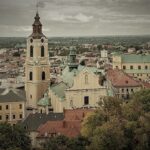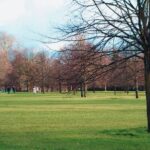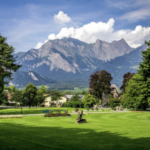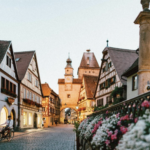Nowadays cities are booming – but could we soon see skyscrapers turned into centers for crop production?

- Vertical farming in the 21st century:
It’s vertical because you are trying to grow more crops on a smaller land area and this usually means going upwards into buildings. It normally means that, instead of having a single layer of crops over a large land area, you have stacks of crops going upwards. It’s also associated with city farming and urban farming.
It is the need to increase crop yield without increasing the land area for crops. If we can move some of that away from the countryside into the city, and get some of that food production close to the high concentrations of population, then we can make a real impact. People want to do it as well – it puts the food supply in the control of people living in the cities.
The beauty of vertical farming is that you can go as high as you want – if you have a system that works efficiently. The only risk with that is getting things that plants need like water and nutrients up there. And you need a way of getting your product out efficiently.

- Interesting travel fact: urban heat island effect
According to Jane McGrath, if you don’t like hot weather, get out of the city. If you turn on the local weather report, you’ll probably notice an interesting trend. Temperatures are often a few degrees higher in cities than they are in their surrounding country areas. This temperature difference is the result of a phenomenon called the urban heat island effect.
This effect makes cities into islands of heat. According to the U.S. Environmental Protection Agency, temperatures in U.S. cities can get as much as 10 degrees Fahrenheit higher than in their surrounding country areas. Normally the temperature difference is not quite that large, but even a few degrees can make a huge difference. Because of the higher temperatures, the demand for air conditioning in the summer leads to increases in greenhouse gas emissions from power plants that provide that extra energy. On the other hand, higher temperatures in cities mean less need for heating in the winter.
To understand the urban heat island effect, we first need to understand a few simple rules of physics. Most importantly, we should understand that objects can absorb and reflect light. Darker-colored objects are excellent absorbers of light. In fact, black surfaces absorb almost all light. On the other hand, lighter-colored surfaces do not absorb much light at all; they reflect almost all of it.
So, what does the absorption of light have to do with heat? When an object absorbs light, it converts that light to heat. So, because black objects absorb more light, they also hold more heat. That’s why wearing a black shirt on a hot, sunny day will only make you hotter. The black shirt absorbs light and makes you hot. Wearing a white shirt, on the other hand, will help reflect the sunlight and keep you cooler.
When we build and expand cities, we tend to build buildings with dark surfaces and lay down black asphalt roads. The buildings and the roads absorb a lot of light and hold a lot of heat, warming the city. Because of this, the temperature difference between cities and rural areas is highest a few hours after sunset. Cities hold on to more heat for a longer period of time than rural areas do.
“Because the dark surfaces of urban structures heat the area, the logical solution is to reverse this trend. Urban planners may do this by painting structures white, or other light colors. This basic technique does a lot to help reduce the urban heat island effect.”










